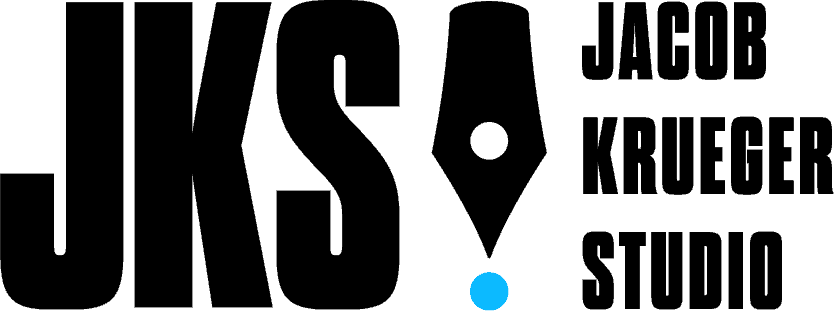[spb_text_block pb_margin_bottom=”no” pb_border_bottom=”no” width=”1/1″ el_position=”first last”]
Formatting: Isolating Visual Moments of Action
By Jacob Krueger
[/spb_text_block] [divider type=”thin” text=”Go to top” full_width=”no” width=”1/1″ el_position=”first last”] [blank_spacer height=”30px” width=”1/1″ el_position=”first last”] [spb_text_block title=”TRANSCRIPT” pb_margin_bottom=”no” pb_border_bottom=”no” width=”1/1″ el_position=”first last”]
Often times we think of formatting as the grammar of the screenwriting. We think of it as this very simple, basic, elemental set of rules that you go and look up in The Hollywood Standard in order to do it properly.
But the truth of the matter is: formatting is like grammar. If you actually spoke proper grammar you’d most likely have no friends. “To whom should I direct this email?” You’d just sound too darn formal. And the same is true for “proper” formatting. It’s just not going to work for you.
And, at the same time, we all know bad grammar when we hear it! And just like bad grammar, when we see bad formatting in a screenplay, we make instant judgements that can really end up leaving your script at the bottom of the pile.
So, today I want to talk about formatting. But I want to talk about formatting in a creative way. Because I feel like a lot of writers at all different levels are really stuck on this idea of formatting. And instead of looking at it as a creative tool of their craft they’re looking at it as something that gets in the way of their creativity.
I want you to understand that formatting only exists for one purpose. The whole purpose of formatting is to isolate visual moments of action.
When you learn to isolate the visual moments of action in your script, you start to do four very important things:
1) You’re going to be writing even better than most professionals—allowing your work to get noticed and stand out from the crowd.
2) You’re going to have a lot more fun writing, because writing is going to be more creative for you.
3) You’re more likely to sell your script because the people reading it are going to be able to visualize each thing as if they were watching a movie in their heads.
4) You’re going to save tons of money when it comes to production. And be a lot more likely to actually like the movie that you end up with.
So let’s talk about what each of the those four words mean: “isolate,” “visual,” “moments,” and “action…”
ISOLATE
Isolate means that we’re choosing the little turning points where your character makes big choices. So, when I say “isolate” we’re never going to show “Jake is running.” Because that’s not isolated. That’s a continuing state.
Instead, we’re going to show, “Jake hops over a large boulder, skins his knees across the pavement, slips on his own blood, and catches his balance against the flag pole.”
Do you see the difference between the state of “Jake is running” and the sequence of isolated moments that told the story? And do you see how much more interesting it was just to watch that sequence of isolated moments than it was to see Jake running? Jake running requires the audience or the reader to be creative. And guess what? They’re not.
Your ideal reader is a producer. And an ideal producer is a salesperson, not a creative writer. And although there are salespeople with creative proclivities, you can’t depend on them in that way. You should depend on them to be able to cut a deal, to talk people into doing things that they don’t want to do, to get more money than you’d ever expect, or to get more movie out of a little bit of money. But you shouldn’t expect them to be able to read “Jake is running” and visualize something cool. That’s your job.
You need to understand coverage readers are even worse. Your coverage reader may be an aspiring writer but the chances are that they are a struggling writer. Otherwise, they would not be reading coverage for $50 per script.
So, isolate means you’re going to pick the specific moments to dramatize, so that your audience, your reader, doesn’t have to be creative.
Now, by the way, if you’re working in independent film, this is also going to save you thousands, if not hundreds of thousands of dollars. Because this means that when it comes to storyboarding your film or knowing exactly what shots you need, you can do it all in advance when it’s cheap as opposed to during production when it’s expensive.
Isolate the visual moments of action. Isolate means that your producer and your director and your cinematographer and your gaffer will know exactly what shots they need. It also means that when you’re running late or when you’re over budget or over schedule or you lose a location and you have to start cutting things out of the script, you can see exactly how those cuts or omitted scenes are going to affect the flow of your movie. You’ll be able to see the isolated moments around them. You’ll be able to actually realize, “this is what I need and this is what I can afford to cut in production.”
It’s also going to save you thousands or hundreds of thousands of dollars in post-production in the editing room.
VISUAL
Formatting is not just about isolating moments, it’s about isolating visual moments. That means moments that are exciting to watch, moments that capture our imagination.
Now, that doesn’t mean that every description has to blow us away. Let’s say you have a scene where a guy bumps into somebody else on the street. Even just having the guy dressed all in white is more interesting than just seeing him bump into a guy. Having a guy dressed all in white with a bleeding cross on his forehead is more striking than somebody all in white and suddenly we’re in a different movie. Somebody all in white with half grey hair, half black hair is also more striking visually.
So: “A man dressed all in white slams into him.” This is exciting, but we can take it even further. “A man dressed all in white, seizes him by the back of his collar and tears down his shirt, sending smoke up as his flesh singes.” That’s more exciting visually, now suddenly we’re in a horror movie.
That doesn’t mean it’s right for your movie. That doesn’t mean every visual image needs to be in a magical world. We can do this in a naturalistic world as well: “A man, dressed all in white, grabs him and yanks him off his feet, knocking over a baby poplar tree.”
Do you see how I isolated it visually?
It’s going to take you longer to write this way. Because to do it you actually have to see it. You have to isolate it in your mind. You have to see the visual moment. You are actually storyboarding the script in your mind when you write like this.
MOMENTS
We are not trying to isolate every single thing that we see. Because if we try to isolate every single thing that we see we are going to go crazy.
For example: “Petra sits with a bottle. She wears a dress that’s covered with cartoon lobsters. She is tall and beautiful. She has a thing of kale chips next to her. Across a brown conference table is Bill. He wears glasses. He has an intelligent look to him and he is filled with enthusiasm. Slightly to his left…”
Do you see how boring this is? Because even though I am isolating – and even thought it’s visual – it’s not the moment. I’m not isolating the visual moments of action. My job is to isolate the visual moments of action. These are the big moments. These are the trailer moments.
If you were writing a trailer of your scene, you want to be able to pick out moments that you’ve written in your action. And if you pick five moments at random, you should be able to assemble it into some kind of trailer of the scene that would make someone want to watch it.
In other words, you want moments where characters are making cool choices, making cool decisions, doing cool things in a visual way, and you want to isolate them so we can go this + this + this = THAT.
ACTION
Your director is always going to cut on action. So you should always cut on action. A visual moment is not “Petra wears a black watch.” A visual moment is “Petra traces the circle of her watch with her forefinger.”
I’m isolating a visual moment of action: of Petra doing something.
And maybe I look even closer and notice the sparkly rainbow nail polish is cracked. So what do I do? I bury that description in the action.
“Petra clicks her rainbow polished nail against the black watch. A crack of rainbow flutters down to the glass”
That’s even better because its action that captures both the sparkly rainbow nail polish and the watch.
So, isolating the visual moments of action means that formatting exists not to capture description. Instead it exists to hide your descriptions within the actions.
If you want to show that Bill has a handsome face. You might catch Bill “posing for himself in the mirror, showing off his distinguished profile.” You might note “Bill smoothes his eyebrows.”
If you want to know that Bill has long flowing golden hair, he might “run his fingers through his long locks.” If you want to show that he has short, cropped hair, you might note him “pulling a little hair to cover that bald spot.”
You choose the moments of action. Action is always going to do more for you than description.
Now, does this mean there is no such thing as description in a script? Of course not. All scripts have description in them. All scripts fail to isolate. All scripts fail to be visual. All scripts fail to have moments. All scripts fail to have action. And your script will too. Because none of us are perfect.
This is a platonic ideal we are striving towards. And sometimes we don’t have it perfectly yet.
But the more you focus on isolating the visual moments of action, the easier it’s going to be to tell your story. Not just because each moment will be awesome, but also because visualizing each of those moments awesomely makes it easier to figure out what you need for the next moment.
This is where you find the gifts that help you build your structure. Because when you build this way you are actually building structurally unwittingly. And that’s something I get into much more in my formatting class. But the concept is: if you isolate the visual moments of action these moments actually do become structural. Even if you don’t know how to build structure yet.
Whereas if you fail to isolate the visual moments of action, then your images don’t work for you because they are not structural. And it becomes harder to figure out what has to happen later in your structure.
So, this is the concept. All of formatting exists for one reason. That reason is to isolate visual moments of action. When you’re not used to writing in this way, this is going to feel extraordinarily slow to you. It’s going to feel hard. And you may need to blow out an early draft where you don’t do this. But don’t blow out a draft of a whole movie where you don’t do this because you’re going to run out of steam.
[/spb_text_block]



